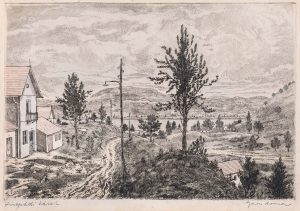
Arnold GROSS
Houses of VisegrádArnold GROSS
Houses of Visegrád
- Year(s)
- circa 1960
- Technique
- copperplate engraving on paper
- Size
- 21x31 cm


András Ernszt currently lives and works in Pécs. He studied at the University of Pécs, where his masters were László Valkó and Ilona Keserü Ilona. He received a DLA (Doctor of Liberal Arts) degree at this university in 2009, and since 2010, he has been an assistant professor at the Department of Painting, Faculty of Arts. In 1997, he spent a period in Munich as the winner of the DAAD Scholarship. In 2001, he was awarded the Eötvös Scholarship from the Hungarian State and in 2003 the Strabag Painting Prize from the Ludwig Museum. Since 1997, he has had regular solo exhibitions and participated in group shows in Hungarian and international galleries: in Pécs, Budapest, Brussels and Stuttgart, among various other locations. András Ernszt's paintings are constantly moving, dynamic colour compositions. The slight deviation of the paint layers from the picture plane creates a characteristic, three-dimensional effect, apart from the various spatial and kinetic illusions. The structuring and layering of material plays a significant role in his work, and a reductive utilisation of colour accompanies this. The almost monochrome tones guide the viewer's attention to the material, to the painterly elaboration of the various surfaces and the deployed technical apparatus. The complexity of the images is increased by the light-shadow effects caused by the layering and the intricate interplay between the different hues of various colours. The viewer cannot find fixed points on the canvases: various formations are positioned on top of each other, while the resulting layering adds depth to them. Their disharmonious arrangement lends them a powerful set of dynamics. The paintings of Ernszt reveal a cavalcade of restless forms, constantly searching for their final destination, shaped by random movement.
More artworks in the artist's collection »
Áron Baráth has been consistently representing abstract painting in Hungary since his career began in the 2000s. His non-figurative works, based on lyrical gestures, radiate translucent, vivid colour harmonies. Born in Novi Sad, Áron Baráth moved to Budapest with his family because of the South Slavic war. He also completed his art studies here, graduating as a graphic designer from the Hungarian University of Fine Arts in 2006. He soon left graphics – which he chose following the family tradition – for painting. After his early attempts at figurative painting at university, he began his career as an abstract painter in the mid-2000s. The free, improvisational gestures of informalism, the broad brushstrokes applied with one or two colours were close to his stylistic world. His early paintings were characterised by dramatic splashes of colour and vivid contrasts of colour, often building on the gloom of black. The wild gestures have been tamed by the 2010s, filled with melodic harmonies, and wide, translucent blurs, stripes and washed-out fields have taken over from monochrome surfaces. His aesthetic language is an inspiring parallel to the fine dining gastronomy served with Japanese minimalism, which he has also evoked as an installation. His compositions are built up from the spontaneous, glazed main motifs and the overlapping colour harmonies of the different coloured backgrounds, which often function as picture frames. Baráth's paintings are very popular and he has had many opportunities to exhibit around the world, from Belgium to Dallas. He lives and works in Budapest. Gábor Rieder
More artworks in the artist's collection »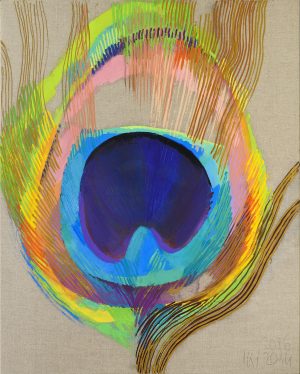
The central axis of Ilona Keserü Ilona's painting practice is provided by her forever-changing spatial and temporal relationship to colours, their research and their various manifestations. In the late 1960s, a definite, thematic tendency emerged in Keserü's work, which she simply called colour research. She wanted to expand her earlier red-orange-pink oriented palette, primarily towards the range of spectral colours. Thus, the range of colours that can be achieved through mixing certain pigments, the analysis of colour resolution, the gradual transition of colours and the upper limits of colour intensity became the subject of many of her works. In the early 1970s, Keserü discovered a wide range of skin tones based on the colour theories of Goethe, which harmoniously counterbalanced the vibrant colours utilised by the artist at the time. From the 2000s onwards, in many of her works, flesh colours appeared as a metaphor of the opposite side of the canvas. The latest stage in her ongoing colour research can be traced back to Keserü's 2001 trip to Rome. Looking at the cleaned surfaces of the ceiling frescoes of the Sistine Chapel, she was confronted with a new – however, common in Michelangelo's time – painterly-optical phenomenon, called cangiante. In essence, it is not the complementary or harmonic colour pairs that are placed side by side, but colour values that mutually enhance each other's light and brilliance and where the choices are made based on personal colour preferences instead of logical reasoning. Keserü was captivated by these unexpected, resounding chords of colour, "sometimes hair-raising things", purple-blue, orange-green combinations, which then served as inspiration for many of her works. Katalin Aknai
More artworks in the artist's collection »
Márta Kucsora studied at the Hungarian University of Fine Arts and later at Montclair State University in the United States of America. Besides pursuing her creative practice, she co-founded Budapest Art Factory, a non-profit art centre, and is the organizer of an international residency program for contemporary artists. Kucsora's paintings are created with water-based paints of varying density, additives, copper dust, varnishes, automotive paint guns and the force of gravity. Although her work is stylistically related to Abstract Expressionism, the way she creates pushes the boundaries of the technically known, navigating through uncharted domains. The painting additives of varying consistency react to each other, and these interactions influence the surface of the paintings. Although the paintings, made without the brush touching the surface avoid direct representation, they evoke natural formations: tectonic plates, aerial shots, sea currents and various plant motifs. The dynamic, abstract surface formations reflect on organic processes, micro- and macrocosmic phenomena and their representations. The drying of the paintings is an integral part of Kucsora's working method. As the surfaces are formed by gravity, the work processes include conscious and unconscious painterly elements. The method, which the artist calls process painting, is based on the material being malleable throughout the act of painting: the aim is to keep it in motion and then let it halt and freeze at the perfect 'moment'. Although chance plays a significant role in the unfolding of Kucsora's works, alongside chemical and physical processes, the paintings are always the end result of a pre-planned and elaborate performative workflow. Viktória Popovics – Kálmán Makláry Fine Arts
More artworks in the artist's collection »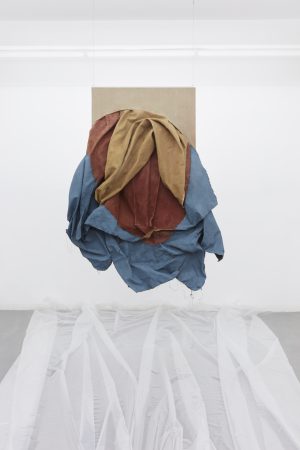
Nikolett Balázs, a member of the MŰTŐ collective, graduated from the Hungarian University of Fine Arts in 2016 with a degree in painting and has since received several significant awards: in 2020 she won the Secondary Archive Young Woman Artist competition, which was presented during Manifesta 14 – Prishtina 2022. In 2021 she was nominated for both the Leopold Bloom and Esterházy Art Awards, and two years later she was the first Hungarian artist invited to the SACO Biennale in Chile, followed by a 2-month residency program of the Visegrad Fund in New York. In February 2024, she had a solo exhibition in Bratislava titled Born Free. In her artistic practice, Balázs explores and reinterprets the dichotomies, generational, social, cultural and societal value crises that define and surround her, both aesthetically and substantively, in a raw, revealing act of letting go/resolving, in a constructivist synthesis of self-searching and self-reflection from a female perspective. In her work she uses the techniques she learned from her parents and grandparents, who worked in agriculture and manual labour in Létavértes, near the Romanian-Hungarian border. She kneads, plasters, screws, sews and cuts rubber tubes and canvas (burlap), metal shavings collected from the MÉH (waste utilization company) site, XPS sheets from construction waste, until the materials are reborn as a harmonious collage, which nevertheless evoke the makeshift solutions of small villages, their harsh but cozy “foul-up-aesthetics”. Nikolett Balázs describes her own works as “object clutches” that reach down to deep layers, offering a visual and haptic experience, a social and ecological imprint, through their abstract, austere structure, yet proliferating symbolism (Palást (Cloak), Szomjas virág (Thirsty flower), 2022). The works Hozzávalók (Ingredients), Origo and Fészek (Nest) (2021) are maternal metamorphosis stories of the sublime materials that have to be extracted from the “smoothness aesthetics” of the present, confessional monuments to self-portraiture, bodily representation and inner lyricism. Annamária Szabó
More artworks in the artist's collection »
Endre Hortobágyi was a predominant artist of the Hungarian Gestural Painting movement in the 1960s. His œuvre was – in parallel with his tragic fate – only genuinely appreciated by the public following his death. His art, rooted in French Lyrical Abstraction and Informel, is an exceptional achievement of 20th-century non-figurative art in Hungary. The distinctiveness of his painting stems from his individuality. Hortobágyi, as one of his rediscoverers, the renowned international museum director Lóránd Hegyi wrote, believed in the possibility of harmony, in a vision of organic totality: "And this is exactly what makes his artistic attitude romantic, almost anachronistically elevated, and the artist, himself a solitary figure." Born in Budapest during the Second World War, Hortobágyi was "against the grain of the era". He was not admitted to the Hungarian College of Fine Arts, so he could only train as a self-taught artist. Around 1962, he joined the Zugló Circle, established by Sándor Molnár, where young artists – in opposition to the official cultural politics of the time – became acquainted with the contemporary tendencies and theoretical texts of French abstraction as part of a self-propelled initiative. Their painting, which was mainly inspired by Jean Bazaine's teachings, was characterised by the transformation of the material world into an expressive system of brushstrokes, letting the depicted object "transcend itself, becoming a passionate ideogram of the truth". Many supportive intellectuals frequented the "second public sphere" of the apartment in Zugló. However, the group's artistic endeavours were labelled "prohibited" and did not find an official outlet. Their first exhibition (New Aspirations, 1966) was closed down by the authorities. Hortobágyi's paintings of the 1960s were dominated by abstracted transcriptions of landscapes filled with spiritual content, followed by a more spontaneous, pure non-figurativity – inspired by the liberating influence of automatic writing – recalling the work of the French painter Alfred Manessier. While the other artists from his generation who got admitted to the Hungarian College of Fine Arts organised and participated in group exhibitions, Hortobágyi became increasingly isolated from the late 1960s onwards, excluding himself from the art world and society in general. During his solitary years, his art transformed: in addition to the surfaces evoking plants and spreading organically in a jungle-like manner, angular, homogeneous colour fields also emerged. During the last period of his career, referred to as the artist's calligraphic period, he painted broad, thin gestures sometimes arranged in atmospheric, fuming structures, utilising a reduced colour palette. Although the professional public embraced his work at the end of his life, he died a wounded and isolated man after the regime change. His pioneering œuvre remains a particularly powerful strain of Informel Painting in Hungary. Gábor Rieder
More artworks in the artist's collection »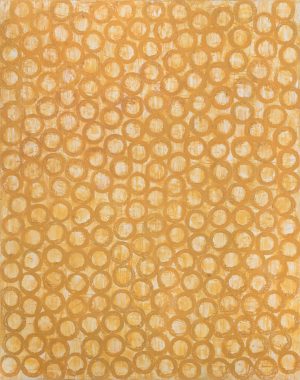
László Lakner’s early career was dominated by his early abstract attempts along with his fundamentally realistic approach. Evoking also classical artistic traditions, he formed his own painting language that ironically twisted the Socialist Realist understanding of pictures. He was a follower of Aurél Bernáth, and besides Tibor Csernus he was also one of the most important representatives of Surnaturalist painting in the late 1950s and early 1960s. Through his artistic works, he gradually got closer and closer to the “new realist” tendency, the pictorial world of pop art. From 1963-64, his works were based on montage-like structures, utilising the motives of everyday visual culture, reflecting on the actual political events as well as on the great art historical traditions – mainly Rembrandt’s art. In 1974, after winning the DAAD scholarship, Lakner moved to West-Berlin. The focus of his new era was on the sensitive pictorial presentation of the semantic questions of human writing and trace-leaving. From the early 1980s, he created more liberated, more expressive scriptural paintings. His artistic period of the 1990s and 2000s was dominated by his abstract picture creation and by his return to the conceptual way of thinking. In recent years, Lakner’s art has turned to the historical past as well as the analysis of his own artistic past and earlier artistic periods. However, this means no turning back – the freshness of his new works seems to deny the passing of time. Dávid Fehér
More artworks in the artist's collection »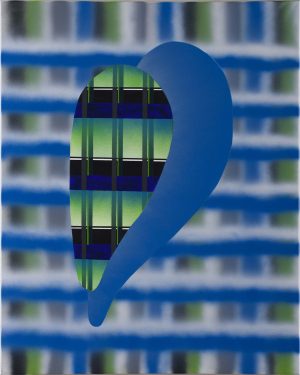
Péter Somody is an artist living and working in Pécs. He was Ilona Keserü's student at the Drawing Department of the Janus Pannonius University of Pécs. He studied at the Master School of the University of Pécs and absolved his DLA (Doctor of Liberal Arts) studies in painting at the same institution. His masters were Ilona Keserü and Gyula Konkoly. Between 1997–98, he was a student at the Academy of Fine Arts Munich. In 1999, he was selected to participate in the exhibition titled "Junge Kunst" at the Haus der Kunst in Munich. During this period, he showed his work in several group exhibitions in Munich and other locations in Bavaria. He is currently a professor at the Faculty of Arts' Department of Painting, University of Pécs, and the head of the institution's Doctoral School. His works are regularly shown in national and international exhibitions in Munich, Nuremberg and Stuttgart. In 2000, he was awarded the Strabag Artaward. In 2015, he received the Munkácsy Prize for his work. Péter Somody is one of the prominent representatives of contemporary abstract painting. He started developing his distinctive style already in his early period. Transparent stain painting is at the core of his artistic practice until the 2010s. He strives to express lyrical sensuality by relying on a reduced set of tools. The translucent, loosely applied patches of colour occasionally overlap; in other cases, they become independent, cloud-like fields of colour enveloping the pictorial space. These open fields of colour become quasi-spaces, into which infinite geometric garlands and serial forms are introduced, based on the principle of the "Open Work". The collision of sharp and blurred elements gives the surfaces a unique objectivity. The viewer is invited to observe the interplay of visual elements on the surface and the meditative silence that emanates from them.
More artworks in the artist's collection »
Imre Bak established the specific character of his paintings in the mid-1960s, referencing the lessons of Geometric Abstraction to this day. Along with some of his contemporaries, Bak defied the geopolitics of the era and the existential and further difficulties arising from the existing social order to connect with the global art of the time. During the Iparterv exhibitions (1968–1969), Bak had already formulated the idea of combining the American tendencies of Hard-edge painting and Minimalism with motifs inspired by Hungarian folk art and the traditions of the local avant-garde. This structuralist programme – which consciously examined the nature of signs and symbols – defined his paintings from the 1970s. In the 1980s, the geometric system of Bak's paintings became increasingly complex, leading to the postmodern turn in the artist's work. During the 1990s, Bak's motifs shifted towards "simplification" again, as expanded surfaces of colour started to define his architecture-inspired paintings. In this period, Bak used perspective and a set of geometric elements to construct his landscapes, where the predominant motifs were "structures" consisting of architectural elements. In his latest work conceived after the 2000s, Bak returns to Geometric Abstraction's fundamental question of how spatial illusion is elicited through two-dimensional means. His compositions that combine rectangular fields of colour with dichromatic, meanderlike lines are based on the utilisation of pure, intense colours, which create the illusion of depth on the canvas. Áron Fenyvesi
More artworks in the artist's collection »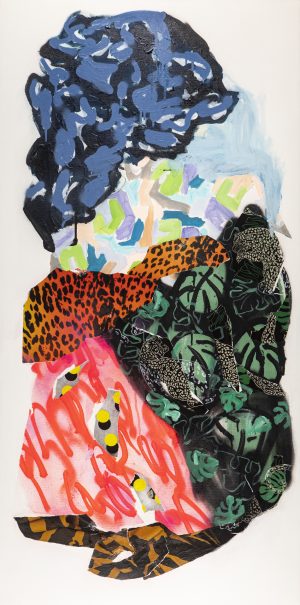
Anna Eszter Tóth graduated from the Hungarian University of Fine Arts in 2014, majoring in painting, as a student of Zsigmond Károlyi, and then she participated in DLA doctoral studies. In 2016 she was awarded the Barcsay Prize. Her artistic interests focus on constantly pushing the boundaries of panel painting, blurring the boundaries between figuration and abstraction, and the representation of spatial objects within the plane. Her favourite subjects include everyday objects, banal motifs and, above all, the artistic expression of activities that fall under the concept of invisible work. The piles of colourful textiles in her paintings and sculptures evoke the world of forms typical of abstract art, confronting the randomness of the compositions with the carefully composed patterns and fields of colour. She transforms the variously shaped piles of clothes into non-figurative spatial column compositions, somehow sculpting the constantly recurring, invisible and domestic tasks typically done by women, such as washing, hanging out clothes to dry, ironing and folding. The "close-up" observation, the abstraction of these banal activities is in fact a painting and visual experiment to display the wrinkling of materials, the randomness of forms and the stacking of layers in a variety of ways. The Giants and the Laundry series reflect on the themes and techniques of great periods of art history, marked by predominantly male artists, from a uniquely female perspective. As the artist puts it: "I discover abstract images in non-abstract situations. It's all a game between the plane and the spatial, between painting, sculpture, art and non-art. It's a reaction to the visual language and thinking of contemporary art about blurring boundaries and imprinting the world around us." Viktória Popovics
More artworks in the artist's collection »
Áron Baráth has been consistently representing abstract painting in Hungary since his career began in the 2000s. His non-figurative works, based on lyrical gestures, radiate translucent, vivid colour harmonies. Born in Novi Sad, Áron Baráth moved to Budapest with his family because of the South Slavic war. He also completed his art studies here, graduating as a graphic designer from the Hungarian University of Fine Arts in 2006. He soon left graphics – which he chose following the family tradition – for painting. After his early attempts at figurative painting at university, he began his career as an abstract painter in the mid-2000s. The free, improvisational gestures of informalism, the broad brushstrokes applied with one or two colours were close to his stylistic world. His early paintings were characterised by dramatic splashes of colour and vivid contrasts of colour, often building on the gloom of black. The wild gestures have been tamed by the 2010s, filled with melodic harmonies, and wide, translucent blurs, stripes and washed-out fields have taken over from monochrome surfaces. His aesthetic language is an inspiring parallel to the fine dining gastronomy served with Japanese minimalism, which he has also evoked as an installation. His compositions are built up from the spontaneous, glazed main motifs and the overlapping colour harmonies of the different coloured backgrounds, which often function as picture frames. Baráth's paintings are very popular and he has had many opportunities to exhibit around the world, from Belgium to Dallas. He lives and works in Budapest. Gábor Rieder
More artworks in the artist's collection »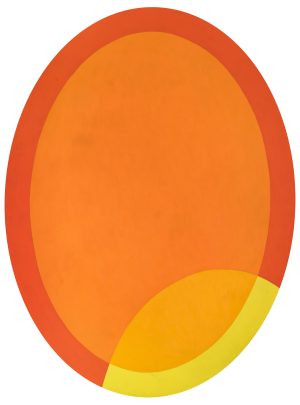
János Fajó is one of the leading figures of Hungarian Constructive Geometric art. During his decades-long career, he researched empirical and geometric phenomena with a unique rigour. In his work, he investigated repetitive structures and their complex variations. His experiments in form spanned different media, including graphic work, screenprints, paintings, wall objects and sculptures. The easily recognisable, orderly visual universe of his works points to the inexhaustible nature of colour and form, relying on the purest pictorial attitude. He created symmetry, asymmetry, infinite variation of movement, rhythm, and dynamic relations by organising simple planar shapes. János Fajó graduated from the Hungarian College of Applied Arts in 1961. In 1971, he founded the renowned Neo-Avant-Garde group, the Pest Workshop, which printed multipliable graphics to democratise art. In addition to his publishing activities, he ran a free school for decades and organised exhibitions as the director of the Józsefváros Gallery. He received the Munkácsy Prize in 1985 and the Kossuth Prize in 2008. He has been teaching at the Hungarian University of Applied Arts since 1989. In 2016, he was elected as a member of the Széchenyi Academy of Letters and Arts. His works can be seen in significant local and international museum collections such as the Ludwig Museum, the Hungarian National Gallery, the Albertina in Vienna, the Neue Galerie am Landesmuseum in Graz, Haus Konstruktiv (The Foundation for Constructive and Concrete Art) in Zurich and the Moscow Museum of Modern Art, as well as important national and international private collections. Zita Sárvári
More artworks in the artist's collection »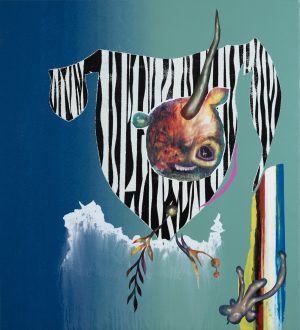
As a leading painter of Hungarian posthuman hybridity, he has been a regular participant in solo and group exhibitions for two decades, both on the local and the international scene. These include the Liverpool Biennial in 2010, a group exhibition at the Factory-Art Gallery in Berlin in 2011, then due to its impact, being added to the collection of the private MACT/CACT Museum and Center of Contemporary Art in Switzerland, and after 2011, one more Esterházy Art Award nomination in 2023. For the fourth time in his career, the central problem of his painting, the representation of the human figure, is ricocheted. While the few years following his graduation in 2007 were essentially characterised by the dynamic, dramatic contrasts of classical painting traditions such as Baroque and Romanticism, with a satirical overtone, in a naturalistic, horroristic narrative composition of colour and form, from the mid-2010s – having completely stripped of the realist approach – the influence of surrealism unfolded in the contrasting laboratory of “quite absurd, almost caricaturistically pathological subject matter”, as Gábor Rieder wrote on the artist’s exhibition titled Federation Of Decomposed Organs And Stripes. However, the distorted fragmentation of the human figure in his paintings reached its peak after 2020, as the human body parts became completely separated from their self-referentiality. The works from the same series, shown in the collection, are now abstract, deconstructed painting elements floating in the space of the picture, like the filtered presence of a cartoon character on another reality. The associative black and white stripe stamp, which is at once zebra carpet, hard-edge veneer constructions and the discount barcode of capitalist society, is applied to a predominantly colour-transitioned base layer, reminiscent of the typical colour palette of American car tuning. As a final layer of paintings, Kis Róka painted the deformed creatures, often distorted pop-cultural references, with the "melted gummy bear" effect of water-based enamel paint (Bad And Naughty, 2021). In the spring of 2023, however, the artist completely erased his hardware and dissolved the image space of his works in the pixel art bitmap matrix of trash aesthetics, making the distorted fragmentary creatures take full shape as stick figures again. Annamária Szabó
More artworks in the artist's collection »
János Fajó is one of the leading figures of Hungarian Constructive Geometric art. During his decades-long career, he researched empirical and geometric phenomena with a unique rigour. In his work, he investigated repetitive structures and their complex variations. His experiments in form spanned different media, including graphic work, screenprints, paintings, wall objects and sculptures. The easily recognisable, orderly visual universe of his works points to the inexhaustible nature of colour and form, relying on the purest pictorial attitude. He created symmetry, asymmetry, infinite variation of movement, rhythm, and dynamic relations by organising simple planar shapes. János Fajó graduated from the Hungarian College of Applied Arts in 1961. In 1971, he founded the renowned Neo-Avant-Garde group, the Pest Workshop, which printed multipliable graphics to democratise art. In addition to his publishing activities, he ran a free school for decades and organised exhibitions as the director of the Józsefváros Gallery. He received the Munkácsy Prize in 1985 and the Kossuth Prize in 2008. He has been teaching at the Hungarian University of Applied Arts since 1989. In 2016, he was elected as a member of the Széchenyi Academy of Letters and Arts. His works can be seen in significant local and international museum collections such as the Ludwig Museum, the Hungarian National Gallery, the Albertina in Vienna, the Neue Galerie am Landesmuseum in Graz, Haus Konstruktiv (The Foundation for Constructive and Concrete Art) in Zurich and the Moscow Museum of Modern Art, as well as important national and international private collections. Zita Sárvári
More artworks in the artist's collection »
Tamás Konok studied painting at the Hungarian College of Fine Arts between 1948 and 1953 as a student of Aurél Bernáth. He emigrated to Paris in 1959. He turned away from naturalistic painting and developed his lyrical geometric style from the 1970s, in which sensitive linear drawing plays a critical role. Galerie Lambert organised his first solo exhibition in Paris in 1960. From the 1970s, Konok and his wife, the sculptor Katalin Hetey lived in Paris and Zurich. Konok worked in close contact with Schlégl Gallery in Zurich and regularly exhibited in French, Swiss, Dutch and Swedish galleries and museums. He returned to Hungary with a solo exhibition in 1980. Since the 1990s, he has been staying and working in Budapest on a regular basis. His work attempted to capture transcendental, timeless realms of meaning: he sought to depict the forces, energies, and relations that drive the universe with his concrete, geometric shapes and linear systems. His musical studies had a profound influence on his art; thus, in his work, he paid attention to the perfect articulation of sound, rhythm, and line navigation. In addition to his "Apollonian" notion of art, which shaped his precise compositions and architectonic pictorial structures, he was also committed to renewing his painting practice during his seven-decade career. The central element of his painterly experiments – based on small-scale collages – could be grasped in the forever evolving pictorial structures, motifs and the dynamic changes in the artist's palette. Krisztina Szipőcs
More artworks in the artist's collection »
Tamás Hencze considered Dezső Korniss to be his master and the Zugló Circle – which examined abstract art and the theoretical work of Béla Hamvas – as his school. He was a winner of the Kossuth Prize and a member of the Széchenyi Academy of Letters and Arts. His painting practice, which initially focused on the directness of the gesture and the Pop art collage, became individually motivated in the second half of the 1960s. He used stencils and a rubber roller when spreading the evenly applied (black) paint, creating precise transitions and eliciting pulsating spatial effects on the picture plane. The dynamic, repetitive, saturated, fading and empty surfaces appeared as the universal rhythm of life. The structures of his paintings – which "emerged from the point" – coincided with the era's scientific worldview and the minimalist attitude in the arts. His works could also be connected to the Op-art movement, which sought to examine vision. However, Hencze relied on a more complex understanding of perception, introducing the picturesque experience of appearance and disappearance. These works were featured in the unofficial exhibitions at the end of the decade (e.g. Iparterv, 1968) and subsequently in European exhibitions displaying contemporary Hungarian art. In the 1980s, he reinterpreted his images from the beginning of his career: he "froze" huge gestures on large canvases, which were seen as part of the era's postmodern turn. These works were not straightforward gestural paintings but exact reproductions of gestures constructed with templates, rubber cylinders, a few intensely saturated colours, and light, which lent the moment's spatial-material (iconic) reality frozen onto the picture plane. In his work on paper, Hencze occasionally lined up the technical tools connected to the creative process of these more recent gestural images, such as the scissor, the ruler and the various geometric shapes. Katalin Keserü
More artworks in the artist's collection »
Zsófi Barabás comes from a family of artists, so she started to express herself artistically at quite an early age. This natural, organic attachment to the language of visual art still describes her work. She began her studies in fine arts as a graphic artist, and later painting became her main language of expression. She studied at the Hungarian University of Fine Arts in Budapest (2004), Cambridge and Tokyo (2009), and completed her doctoral studies in Pécs under the supervision of Ilona Keserü in 2022. Although drawing remained one of her favourite means of expression, she also made installations during her stay in Tokyo. She has exhibited in Moscow, Buffalo, USA, and in several venues in Hungary, including the Deák Erika Gallery. She speaks with ease in the language of drawing, painting and installations, but whatever she touches, her visual world emerges through an organic abstraction. Using different sizes and colours, she throws herself into this swirling world of forms, where the works – following the ideas of László F. Földényi – almost create themselves. At first glance, the abstract forms of the light, colourful paintings blend together with playful dynamics, as if they were deep-sea creatures, projections of a dream world, or even inspired by a fantastic film. In addition to the playful movement and dynamics, the shapes are meticulously crafted and the choice of colour – perhaps just as important as the ensemble of shapes – is also quite deliberate. We get the impression that the artist is – consciously or unconsciously – following her own theory of colour, which is perhaps not so surprising for an artist walking in the footsteps of Kandinsky. The art of Zsófi Barabás – despite the fact that the great predecessors the footsteps of whom she follows were mostly men – is clearly feminine. Joan Miró's playful forms, Hans Arp's biomorphic figures, but most of all Alexander Calder's emblematic leaf-like, moving and reflective motifs were the foundation of her path, but her use of form and colour is clearly that of a woman. Despite the predominance of painting, like Calder, she also creates drawings of space, where simple recurring motifs come to life and speak to our collective unconscious, so that they are all very familiar to us all. Délia Vékony
More artworks in the artist's collection »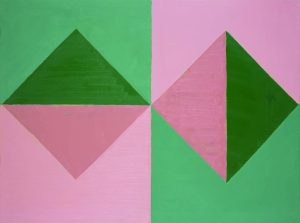
Zsigmond Károlyi, after his figurative experiments of the 2000s – which manifested in archaizing, quasi-symbolic genre images, still lifes arranged from children's toys, sour pastiche pieces – once again started painting geometric images, returning to his concept from around 1977-78, which was based on the relationship of elementary forms and motion relations. His works recorded the triangle's and the rectangle's phases of rotation; his series of paintings is thus a synthesis of decades of artistic practice. The platform and the arguments of this pictorial summary are based on a kind of orthodoxy, on the fundamentalism of painting theory. At the same time, this becomes a stylistic framework, a characteristic form in itself. The visual structures created by rotation, the virtual shifting of planes, the division of the image surface and the transformation of this rhythm by adding new sections - sometimes planar fractals – provide a complex set of terms. Károlyi uses pure primary colours of additive and subtractive colour mixing in these procedures, complemented with the broken "mutants" of these colours. The almost exclusively square-format, balanced quality of the boards is juxtaposed with peculiar, immanent seriality, a gesture that generates form, folding out and across, folding in and down, mirroring. These processes vary and permute the planes intended and assumed to be regular, which are ultimately strikingly personal. The square is halved, the triangle is reflected. A circle or a sector appears only rarely. The forms are aligned in the austere tension of cold and warm, converging and receding hues and the delicate balance of complementary colours, while the images reveal something seemingly stricter, at the same time self-ironic, from a distance, but perhaps not involuntarily, indeed: a reference to Bauhaus, a quasi-pedagogical "dogmatism". István Hajdu
More artworks in the artist's collection »
Tamás Hencze considered Dezső Korniss to be his master and the Zugló Circle – which examined abstract art and the theoretical work of Béla Hamvas – as his school. He was a winner of the Kossuth Prize and a member of the Széchenyi Academy of Letters and Arts. His painting practice, which initially focused on the directness of the gesture and the Pop art collage, became individually motivated in the second half of the 1960s. He used stencils and a rubber roller when spreading the evenly applied (black) paint, creating precise transitions and eliciting pulsating spatial effects on the picture plane. The dynamic, repetitive, saturated, fading and empty surfaces appeared as the universal rhythm of life. The structures of his paintings – which "emerged from the point" – coincided with the era's scientific worldview and the minimalist attitude in the arts. His works could also be connected to the Op-art movement, which sought to examine vision. However, Hencze relied on a more complex understanding of perception, introducing the picturesque experience of appearance and disappearance. These works were featured in the unofficial exhibitions at the end of the decade (e.g. Iparterv, 1968) and subsequently in European exhibitions displaying contemporary Hungarian art. In the 1980s, he reinterpreted his images from the beginning of his career: he "froze" huge gestures on large canvases, which were seen as part of the era's postmodern turn. These works were not straightforward gestural paintings but exact reproductions of gestures constructed with templates, rubber cylinders, a few intensely saturated colours, and light, which lent the moment's spatial-material (iconic) reality frozen onto the picture plane. In his work on paper, Hencze occasionally lined up the technical tools connected to the creative process of these more recent gestural images, such as the scissor, the ruler and the various geometric shapes. Katalin Keserü
More artworks in the artist's collection »